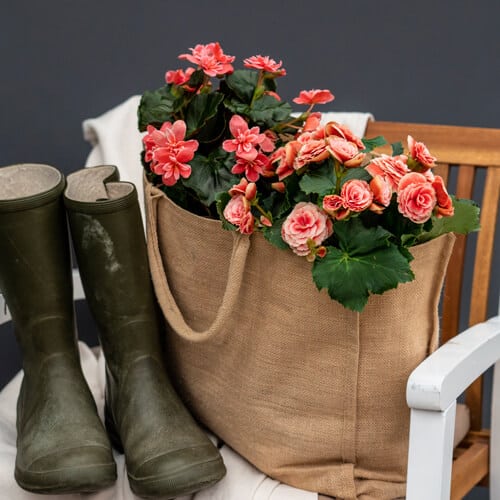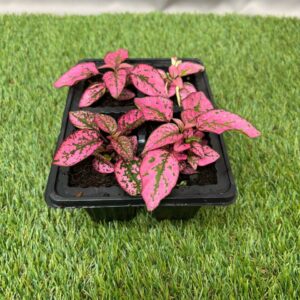Colour your world with summer-flowering annuals
Flowering plants

Colour your World
Spring is the time to sow seeds of summer-flowering annuals for a colourful summer display. Annuals are a fast-growing group of plants that grow, flower, make seed and die back in one season.
If you are on a tight budget, growing plants from seeds is the solution. It’s easy to grow your own annuals from seed and, in fact, some seeds are best sown in situ, that is, directly into the area where they will be growing. Other seeds can be sown in seed trays and transplanted into the garden once they are at the right height
Sow the Seed
Some seeds grow easily when sown directly into garden beds (in situ). However, only do this once you are sure that all danger of frost is over.
Seeds suitable for in situ sowing include alyssum, cosmos, nasturtium, portulaca, sunflower, cosmos, celosia, gazania and salvia. Prepare the beds with compost and well-rotted kraal manure. After planting, fertilise the seedlings with a liquid fertiliser every four weeks.
Other seeds germinate best when grown in seed trays. Use trays or pots with good drainage holes so the seedling roots don’t become waterlogged. Seedling trays that are 5-8cm deep are ideal. Annuals that should be sown in seed trays first include aquilegia, campanula, celosia, cleome, coleus, dianthus, lobelia, marigold, nicotiana, petunia, salpiglossis, snapdragon, torenia, vinca and zinnia.
About two weeks before transplanting into the garden, put the seedling trays outside, preferably in a spot where they’ll receive direct sun in the morning and bright, but indirect light in the afternoon. Remember to shelter them at night from any danger of late frost. The last week before transplanting, leave them out at night to ‘harden off’, that is, get used to garden conditions. The instructions on the seed packet indicate how far apart the seedlings should be planted in the garden.
Put them to bed
For the busy gardener, bedding plants are a wonderful way to add instant colour to the garden without the hassle of sowing the seed first. Fill your garden with masses of colour this season with rewarding summer-flowering annual plants. They can be used as edging to the border, planted amongst perennials and bulbs and for adding impact when planted in containers on patios and alongside paths.
Bedding plants are easy to grow and suitable for all areas of your garden. Because they have a relatively shallow root system they can be even planted in areas where there is not a lot of soil.
To enhance their flowering performance, feed bedding plants with a liquid fertiliser application every week and deadhead the spent blooms regularly so that the plant continues to flower. Remember that annuals produce seeds within one year and so if you allow old flowers to remain and produce seed, the whole plant will die off, thinking its work is done!
Annuals for Sun
Annuals for the sunny areas in your garden include alyssum, antirrhinum, asters, carnations, celosia, cornflower, dahlia, dianthus, gazania, gypsophila, helichrysum, larkspur, linaria, marigold, nasturtium, nicotiana, portulaca, petunia, phlox, salvia, sweet William, vinca and zinnia.
Annuals for shade: Top of the pops when it comes to shade-long summer bedding plants are begonias. They not only have brightly coloured flowers, but also attractive foliage. They are available with green and bronze foliage with flower colours ranging from white to pink to red and various shades in between. Plant begonias in containers, hanging bowls and baskets. They can be used in full shade areas and in semi-shade. Other annuals for shady areas are coleus, foxgloves, aquilegias, lobelia, mimulus, myosotis and torenia.
Summer-flowering Bulbs
Spring gardens are filled with glorious spring-flowering bulbs such as daffodils and tulips, but summer-flowering bulbs can continue the display if planted now. The big three summer-flowering bulbs are dahlias, gladioli and amaryllis (Hippeastrum), and these can be planted any time from now until December depending on when you want colour.
Exactly when you plant your bulbs determines the time they will flower. Planning for colour is important if you’re having guests over the festive season or a summer wedding in the garden. All you need to know is when to plant your bulbs. Follow the planting instructions on a pack and appreciate that regular watering is the key to bulb success in the dry parts of the country.
Other rewarding summer-flowering include arum (Zantedeschia), blood flower or Katherine wheel (Scadoxus multiflorus subsp katharinae), blue squill (Scilla natalensis), candelabra flower (Brunsvigia radulosa), crinum, crocosmia, eucomis, gayfeather (Liatris callilepis), nerine, Peruvian daffodil (Chlidanthus), sprekelia (S. formosissima), tuberous begonias, tigridia, tuberoses (Polianthes tuberosa), watsonia, white berg lily (Galtonia candicans).
You might also like
Shop online
-
- Sale!
MINI ADULT 2KG
- Original price was: R348.99.R279.19Current price is: R279.19.
- Add to cart Learn More




